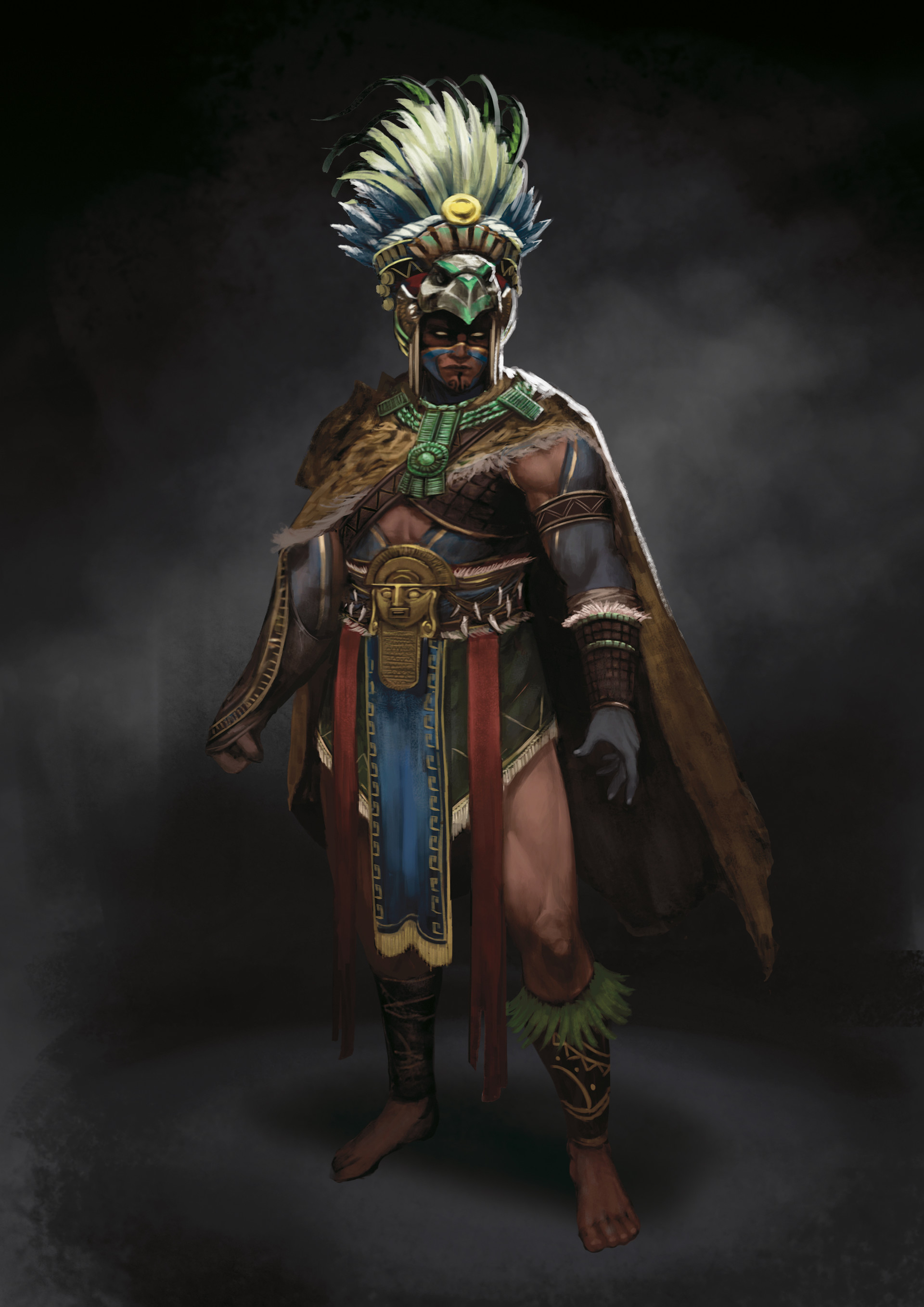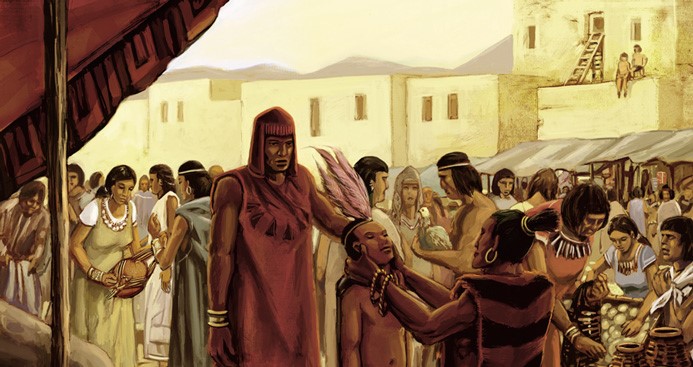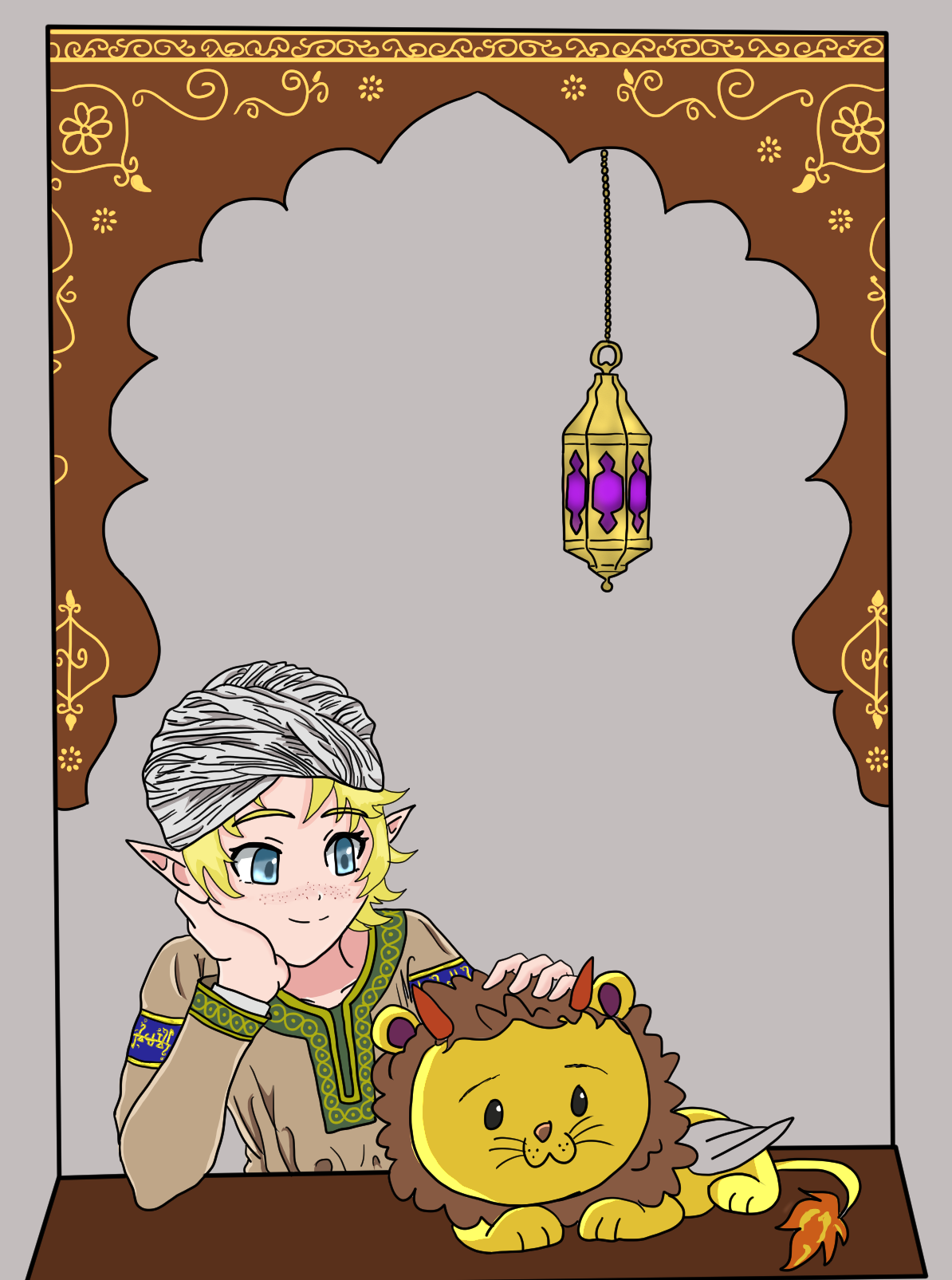Xicolli (shi-col-ly)
Mechanics & Inner Workings
- Dead speakers are buried or burned while wearing the elegant ayauhxicolli and are further wrapped in the chalcaayatl cape.
- Xoxouhqui and neçahualquachtli are worn just once by perspective speakers for a period of days, after which it is thoroughly washed of splatterings of blood, residue smoke and decaying pulp by temple washers and stored again until the next selection.
- Several teoxicolli are under the care of the emperor's household to be worn for special pubic events where officials or foreign dignitaries need to be intimidated.
- The tliltic and omicallo combo, by contrast, are treated as regular formal clothing and belonging to the temples rather than the individual priests.
Their existence is largely temporary. Because their material is so valuable, xicollin are replaced before they fully deteriorate so that the quachtli can be cut into smaller sheets to resell and recoup the vest's cost.
Manufacturing process
One-by-One
This is a simple weaving technique where the weft thread moves alternately through each warp thread in its path on its horizontal course, then its direction is reversed where the weft moves alternately through the previous set of threads. Warp and weft are popular to interlace different materials for different textures and appearances. Featherworkers, in particular like to glue, crimp and sew feathers with cotton to make these textiles and use colour dyes to paint the various geometrical styles as needed after they are woven.Significance
Ayauhxicolli
(ar-yai-c-colly)These are blue see-through garments with pintail feathers linked to agrarian deities such as Tlaloc and Cinteotl. It is the costume to which many great speakers and royal rulers who died are dressed, as part of a funeral ceremony to link them to the supernatural. In addition to traditional snake ear-ornaments; the wearer also wears a wide collar, plaited like a mat with green studded gems, and a large gold disk encircling their breast. These jackets are called a variety of names relating to water:
- Dripping Vest
- Cloud Vest
- Blue Jacket
- Mist Garment
- Dew Jacket
Chalcaayatl
(kal-caw-u-tal)A thin netted cape made of twisted thread and knotted like a net with small inlaid snail shells. This particular design is worn by chief warriors for ritualistic occasions. However, the capes' shells for rulers and members of the Shorn Ones, are swapped for golden shells and fruit respectively.
Xoxouhqui
(shu-shu-kee)A green blue sleeveless jacket worn by speaker electees during public appearances. When the future ruler is appointed, he is undressed at the great temple and adorned with a turquoise diadem, a tobacco gourd, blue-green cotton incense bag decorated with more motifs of bones, an incense ladle painted with skulls, and foam sandals with green toes.
Neçahualquachtli
(neh-kaa-wahl-kwa-oot-ly)A blue-green fasting cape that ties at the front and decorated with a bone motif. It also veils the head to transform the electee into a sacred bundle of the patrons of Sangsalgu's rain gods. He would wear these clothes for four days while fasting, burning incense and carrying out self-sacrifice, symbolizing his own death and rebirth as if they were a substitute chalcaayatl for his mortuary bundle.
Tliltic
(clic-tic)A black sleeveless jacket most commonly seen during human sacrifices or bloodletting. They are worn by the lines of priests responsible for the killings and lords parading with incarnates during their public prances. Knife wielding priest distinguish themselves by carrying bags of copal incense around their waists and special back pouches on their chest decorated with folded paper. Speakers wear a double-heron headed headpiece pinned by an ahuitzotl bone and publicly carry tobacco gourds, paper devices, and implements for drawing their own blood.
Omicallo
(om-i-clo)A ritual cape decorated with bone motifs and worn during sacrificial rites by the main priest in charge of the ceremonial bathings.
Teoxicolli
(teo-xe-c-colly)A divine jacket with feather borders, made in different colors and patterned with human skulls and bones to affiliate the wearer with death. It is found only in the apparel of the city's rulers and acts as the signifier in sang picture writing of the speakers doing priestly things.
- Dyes
- Cotton
- Wool
- Silver Silk
- Cactus Needles
- Hooked Scalpel
- Dying Bowl
Coyotlinaual
The name coyotlinaual, the God of costumes craft, means “he who is disguised as a wolf". Craftsmen would worship and prey to him whenever an artist is to make exquisite feather mosaics for a royal patron.
Cicuilli
(cee-q-ly)Cicuillin with a scalloped or fringed hem, are the predecessor garments to xicollin from the sang's time as exiled refugees. They are still worn by their sister tribes in the shadow plains as the principal apparel for aristocratic males. These warg xicolli are the same sleeveless, fringed garment worn by the sang, except for being predominantly red. Though, there are white and black designs worn by warg religious leaders and that are often set as offerings too.











Talk about being fast :D What happens to these garments after their owner dies? Are they passed down to other priests, or burned? Is there any sort of ritual they feel must be done before that can happen? You mention feathers, bones, and skulls - what kind of skulls? Is there any symbolism to what kind of skulls they are or what kind of feathers they use? :) Very detailed article, nicely done :D
Creator of Araea, Megacorpolis, and many others.
Good Questions. I elaborated some in the article. But generally, these clothes are mostly owned by officially recognized temples and cults in the city and by very rich nobles who work in the priesthood. The repeated mentions of bone pattern is meant to imitate death. That is, they are apart of rituals that mimic dying, to intimidate others with human skulls as an incarnate of death or to be worn by important dead people for burying/burning. There are many iterations of the vests used for related but separate purposes.
Awesome :D
Creator of Araea, Megacorpolis, and many others.